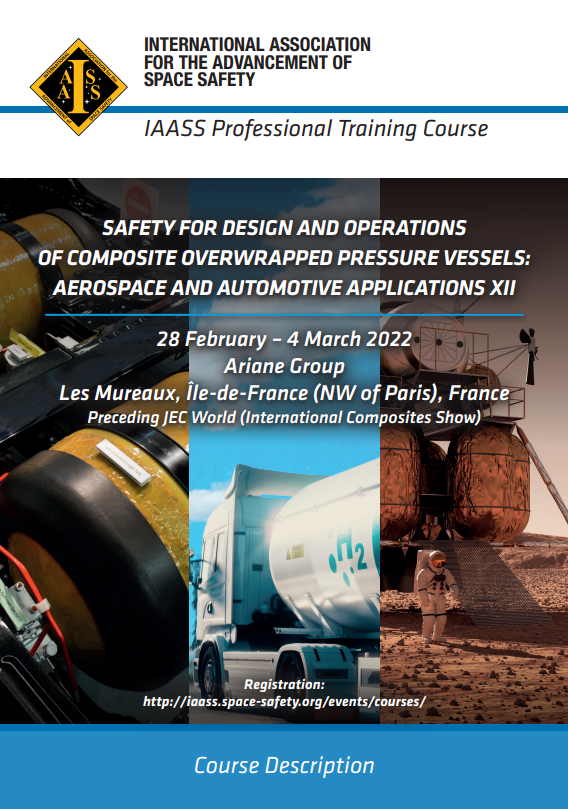SAFETY FOR DESIGN AND OPERATIONS OF COMPOSITE OVERWRAPPED PRESSURE VESSELS: AEROSPACE AND AUTOMOTIVE
- Mohamed amine Abichou
- Feb 18, 2022
- 2 min read

This course introduces the basic principles governing the de[1]sign and operation of Composite Overwrapped Pressure Vessels (COPV). The comprehensive overview of current technological understanding will provide both engineering mechanics fundamentals and practical applications.
While the course will consider the broad array of standards in the aerospace and automotive sectors, the course focus on the implementation of the following aerospace industry consensus standards:
ANSI/AIAA S-080A-2018 Space Systems – Metallic Pressure Vessels, Pressurized Structures, and Pressure Components
ANSI/AIAA S-081B-2018 Space Systems Composite Overwrapped Pressure Vessels
Currently, the aerospace industry is beginning to introduce COPVs with a plastic liner and linerless Composite Pressure Vessels.
This course will discuss the critical issues with the certification of these classes of pressure vessels and the open issues in the development of the Guide and eventual standard.
ANSI/AIAA G-082 Space Systems-Composite Overwrapped Pressure Vessels with a Plastic Liner (in preparation)
For Automotive applications:
• CSA/ANSI NGV2 Compressed natural gas vehicle fuel containers
• CSA/ANSI HGV2 Compressed hydrogen gas vehicle fuel containers
The course will also provide the context of current and future standards from the heritage standards:
• DOT FRP-1 Basic Requirements for Type 3FC Cylinders
• DOT FRP-2 Basic Requirements for Type 3HW Cylinders
• UN GTR 13 Global technical regulation on hydrogen and fuel cell vehicles
In 2020, QustomApp and S VERTICAL, though a joint-partnership, introduced WoundSim, a new generation tool to design, simulate and optimize Composite Overwrapped Pressures Vessels. This IAASS course will also introduce WoundSim capabilities necessary for analyzing candidate COPV designs. It can also be used to as[1]sess a range of operational conditions for compliance with performance standards, necessary for certification through aerospace standards.
Day 2 training introduces how the commercially-available Finite Element Analysis (FEA) software tool can analyze candidate pressure vessel designs. In this introduction section, we will explain how WoundSim capabilities enables the analyst to properly account for the presence of the composite overwrapped fiber layers and their contribution to the response of the pressure vessel to various conditions, including pressure, temperature, and external loads.


Comments